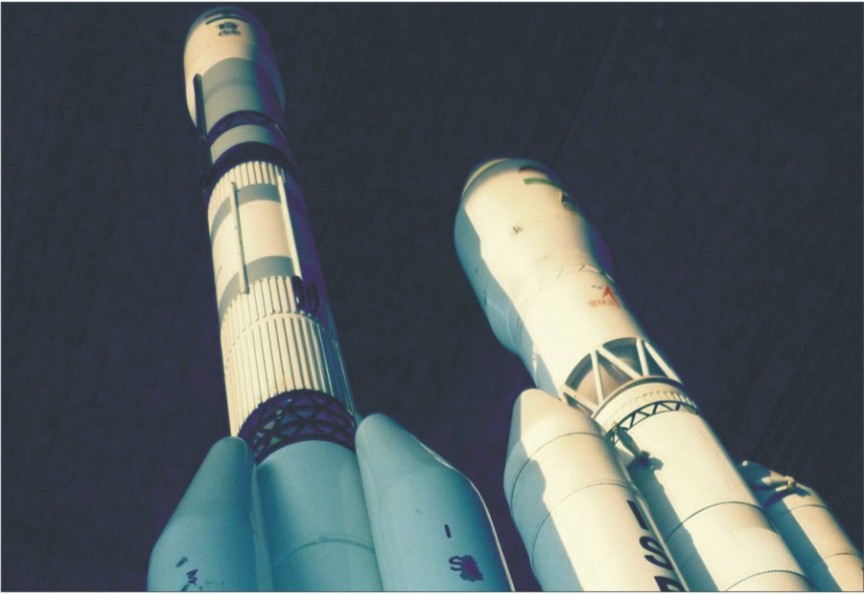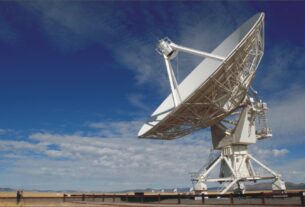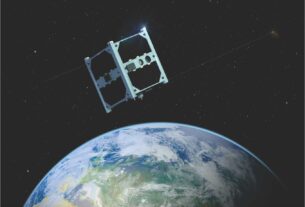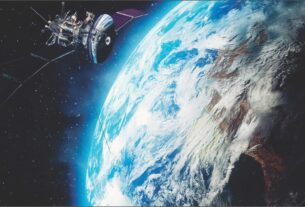War in orbit
A well equipped, ground based tracking infrastructure is vital to constantly monitor the position of an orbiting satellite and detect its ground track with precision. The satellite pass prediction and real time satellite tracking constitutes the mainstay of the tracking activities.
In the ultimate analysis, tracking is also a fundamental step towards determining the operational efficiency of a satellite for harnessing its potentials. In the Indian context, the telemetry, tracking and command network of the Indian Space Research Organisation (ISRO) provides mission support to orbiting satellites as well as launch vehicle missions.
The ISRO network focuses on network operations, mission operations, spacecraft health monitoring as well as communications and control functions.
The Indian Deep Space Network (IDSN) commissioned during the year 2008 at Byalalu village near Bangalore forms the ground segment for providing support to deep space missions including India’s first mission to moon Chandrayaan-1.
Deep space mission
The IDSN is the first of its kind facility in the country that provides ISRO the capability to handle deep space missions of India and also provide cross support to deep space missions of other countries.
However, India is yet to put in place a facility similar to NORAD (North American Aerospace Defence Command), a joint initiative of US and Canada, meant to monitor man made objects in space and the detection, validation and warning of attack against North America whether from air or space.
NORAD also keeps track of the space debris on a sustained basis. Clearly, NORAD has a necessary level of expertise and infrastructure to forewarn about the possibility of threat to North America from space based objects.
Since the Chinese killer satellite test of January 2007, concern has been growing in India over the possibility of Indian “space assets” becoming a target of “rogue, hostile satellites”.
This Chinese anti satellite test involved the deployment of a ground based medium range missile to hit an aging weather watch satellite located in the middle earth orbit.
Not surprisingly then that the Indian Defence Minister while addressing the United Commanders Conference in New Delhi in mid-2008 had expressed his serious concern over the possible threat that Chinese anti satellite devices could pose to the security of the Indian space assets.
The Defence Minister was clear in his observation that India cannot afford to remain a silent spectator in the context of the “emergence of anti satellite weapons, a new class of heavy lift off boosters and an improved array of military space devices in our neighbourhood.”
In fact, in the aftermath of the Chinese anti-satellite test there was a clamour in India to speed up the formation of a tri-service aerospace command to prepare India for an eventuality of a full fledged space war. Experts had also highlighted the need for strengthening Indian satellites to neutralize the threat from “enemy satellites”.
Responding to the Chinese anti satellite test, which had contributed to the “space debris” belt around the earth in a big way, the then head of the Indian Space Research Organisation (ISRO) G Madhavan Nair had stated that India has the technological wherewithal to develop and deploy an anti satellite system.
But Nair made it clear that India is committed to the peaceful uses of outer space and as such has no plans to “create a ground” for preparing the country for a “space war”. Officially, both India and China have pleaded for banning the deployment of “weapons of destruction” in outer space.
However, as things stand now, China would need to refine and upgrade the anti satellite system meant to knock out satellites designed for communications and navigation that are normally placed in higher orbits.
Enough evidence has also been gathered about Chinese keenness to develop space based laser devices which can be used with stunning effect to “kill enemy satellites”. Of course, the space based laser weapons are yet to assume a practical shape as there are hindrances in shaping a weapon out of laser for use in space environment.
Laser, the high energy, concentrated beam of light has the capability to heat up the outer space of a satellite till it is put out of commission. In particular, the imaging surveillance satellites are highly vulnerable to laser as their functions depend on devices which are sensitive to light.
Evidently, it is not difficult to determine the orbit of a rogue satellite and devise the strategy to blunt its edge.
Against this backdrop, India’s state owned Defence Research and Development Organisation (DRDO) has highlighted the need for India to develop space based laser sensor to monitor and track space based killer devices.
DRDO head V K Saraswat is clear in his perception that India should not lag behind in putting in place the high tech devices meant to protect “Indian space assets.”
There is no denying the fact that specialized satellites moving stealthily in the depths of outer space and monitoring spacecraft lift off, missile launch, nuclear tests, naval movements, radio communications and radar frequencies as well as troop build up and defence preparedness could be particularly vulnerable to the attack of enemy “killer satellites”.
On another front, by decapitating or destroying the ground support network including the tracking facility, the access to space could be denied to an adversary in a war involving space based assets. For the outcome in the battlefield of the future is expected to be determined by the supremacy sustained in outer space.
India would need to build up a strong space defence capability by pooling the expertise and technological advances made by both ISRO and DRDO. Because a string of satellites meant for different end uses hold the key to the success of military operations on the ground, in air and sea, protecting the space assets is critical to a successful battlefield strategy.
Moreover, the network centric warfare involving an integrated, efficient and on time use of the resources spread around the world and cutting across various wings of the services, is fully dependent on satellite capabilities.
It may be recalled that US led allied forces were able to secure breakthroughs in their war against terror in Afghanistan and Pakistan that included the elimination of the terror kingpin Osama Bin Laden in his supposedly safe hideout in the Pakistani cantonment town of Abbotabad in May this year by making extensive use of “space resources”.
Countering space threat
The Technology Perspective and Capability Roadmap of the Indian MoD focuses on priority areas that includes space warfare and ballistic defence shield. Significantly, this roadmap also points out the need for developing an anti satellite capability “for electronics or physical destruction of satellites in both the low earth orbit and geostationary orbit.”
Sometime back, Avinash Chander, Director of the Hyderabad based Advanced Systems Laboratory (ASL) of DRDO had made a point that to ensure the safety and security of Indian space assets, a constellation of small satellites – in the weight class of 30-60kg – with warhead can be activated in case of enemy attack.
“Currently, our satellites are not protected. The only way to counter an enemy attack on our satellites is shooting down enemy satellite,” said Chander.





